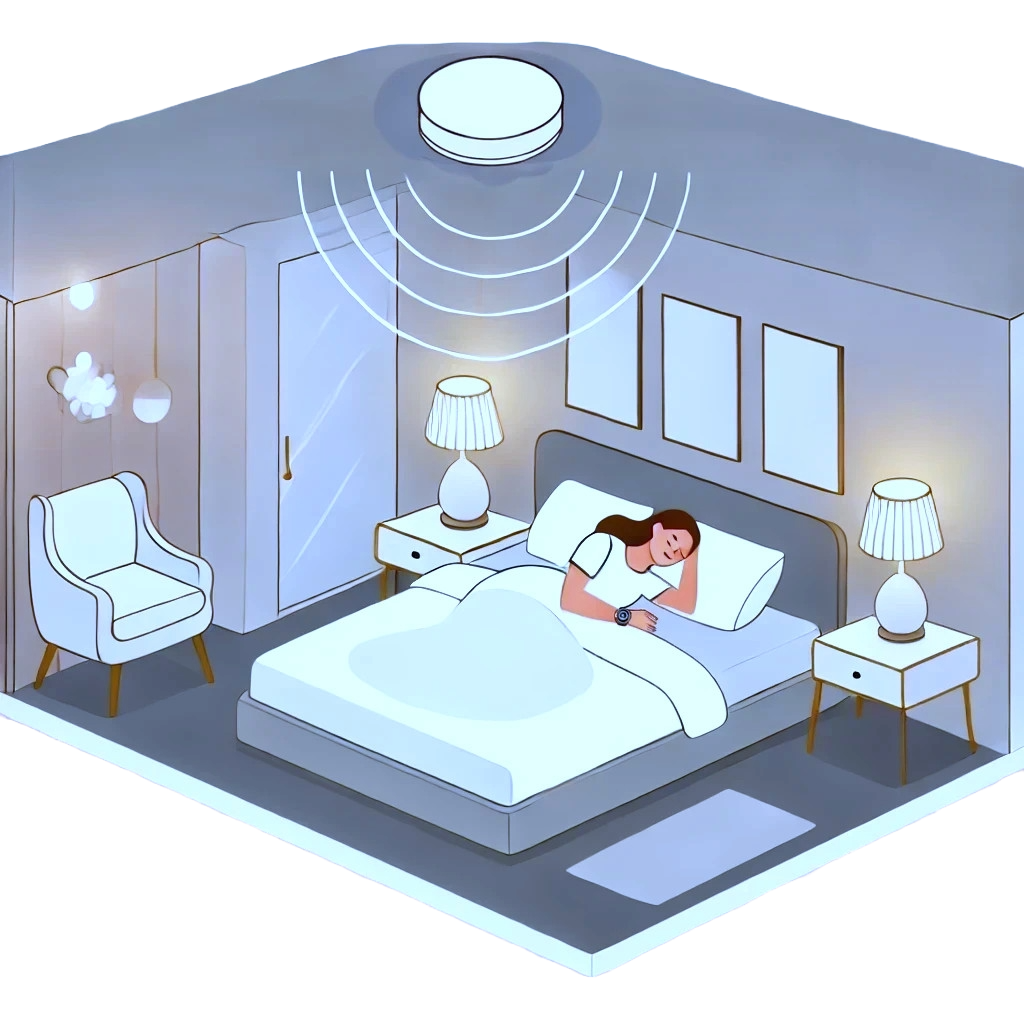People with diabetes need to carefully control their blood sugar levels to avoid short and long-term health complications. This can be done using insulin injections, but it also increases the risk of low blood sugar, called hypoglycaemia. Hypoglycaemia often occurs at night and can lead to serious problems such as falls and heart problems. It can also reduce quality of life and cause symptoms like shaking, abnormal breathing, and abnormal movements. Managing diabetes can be especially difficult for elderly people in long-term care due to other health conditions and changes in care providers. In the Moonwalk project, we aim to investigate the possible association between glucose levels and motion patterns during sleep in people with diabetes. To do so, we use a QUMEA radar sensor mounted on the ceiling to track motion during sleep, and wrist-worn smartwatches to collect data on physiological symptoms. Over the course of 10 days, we will collect data from 40 patients. After the end of the study, we will develop algorithms that can be used to build a warning system for nocturnal hypoglycaemia. This study is registered on clinicaltrials.gov under NCT05609175.
Collaborators
Publications
Mendez C, Kaykayoglu CA, Bähler T, et al. Toward Detection of Nocturnal Hypoglycemia in People With Diabetes Using Consumer-Grade Smartwatches and a Machine Learning Approach. Journal of Diabetes Science and Technology. 2025;0(0). doi:10.1177/19322968251319800
Funding Sources
Diabetes Center Berne Foundation
Innosuisse Innovation Cheque
Vontobel Foundation
